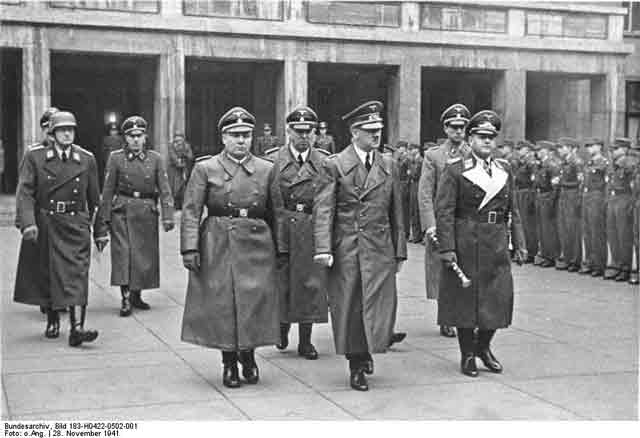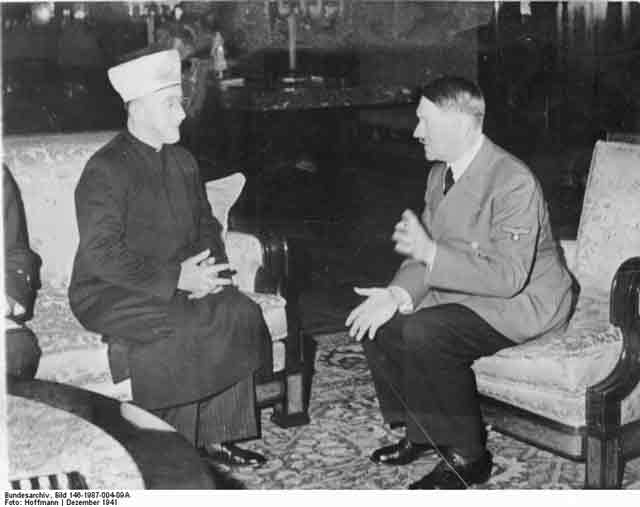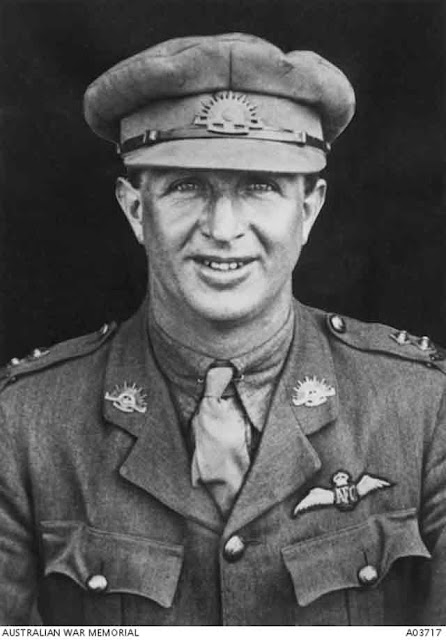Eastern Front: After the massive Wehrmacht gains of the first month of Operation Barbarossa, the front has quieted down on
25 July 1941. The Germans need time to consolidate their rear by eliminating bypassed pockets of Soviet troops, while the Soviet need to rebuild their shattered armies.
In the Far North sector, Finnish forces alone continue to move forward. Finnish 7th Division of VII Corps takes the village of Ruskeala, a key road junction north of Sortavala and Lake Ladoga. The Soviets at Sortavala (northernmost part of Lake Ladoga) have brought in the 168th Rifle Division and 198th Motorized Division and are preparing to launch a counterattack northeast toward the Jänisjoki River. The Finns, however, come into possession of a copy of the Soviet plans and adjust their forces accordingly.
Meanwhile, Finnish Fifth Division (Colonel Lagus) of VI Corps is digging in along the tiny Tuulemaa River (Reka Tuloksa) on the eastern shore of Lake Ladoga. Finnish Commander-in-Chief Marshal Mannerheim has decided against carrying the offensive farther into the traditionally Russian territory. Some Finnish troops are refusing to go further because a continued advance is certain to provoke the Soviets and Finland's war aims are simply to recover traditionally Finnish territory - which now has been accomplished in this region.
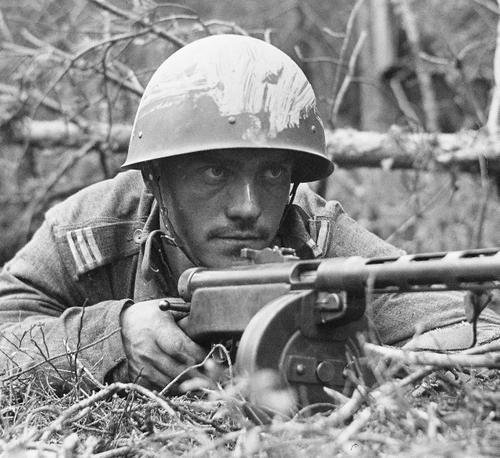 |
| Finnish sergeant with Suomi M31 submachine gun. Häsälä, July 25, 1941. |
The Finns recently occupied the island of Bengtskär, which is west of the Soviet-occupied port of Hanko in southern Finland. Today, the Soviets send the 60th Border Guards (Lt. P. Kurilov and Commissar A.I. Rumjantsev) on small boats to occupy it. The Finns have only about 30 men and one artillery piece on the small island, which provides a handy observation point at the mouth of the Gulf of Finland.
In the Army Group North sector, the German 18th Army (Colonel General Georg von Kuchler) attacks the Soviet 8th Army in the Pärnu Bay region of Estonia. The Soviets give ground.
In the Army Group Center sector, the Soviet attacks on the exposed Panzer Group 2 bridgehead at Yelnya continue.
In the Army Group South sector, Panzer Group 1 (General Paul Ludwig Ewald von Kleist) engages in a tank battle with forces under Soviet General Mikhail Kirponos. The battle continues throughout the day without any clear winner. Elsewhere, Soviet Southwestern Front is in full retreat toward Uman and the Dneipr River.
The Luftwaffe does some minelaying off of Saaremaa (Osel) Island near the Gulf of Riga. Other Heinkel He 111 bombers of I,/KG 55 raid Dorogobush, Smolensk Oblast, Russia, losing one plane
Staffelkapitän of 7./JG 5 Oblt. Theodor Weissenberger shoots down two Russian lend-lease Airacobras and three Pe-2 bombers. Thus, he becomes an "ace in a day" - though he already is an ace.
 |
| Valentine tanks of 6th Armoured Division passing through a village during exercises in Bedfordshire, 25 July 1941. The leading vehicle is named 'Sneezy' (© IWM (H 12016)). |
European Air Operations: RAF Bomber Command raids Hannover (30 Hampdens, 25 Whitleys, 4 Hampdens, and 1 Hampden lost) and Hamburg (43 Wellingtons, 2 lost). The Hamburg raid causes four large fires in the city and shipyards, with one death and six injured. There is a diversionary raid by 7 Stirlings (2 lost) and 2 Halifaxes (one lost) on Berlin. Two Wellingtons bomb Emden. The losses during the night are heavy, with 10 of 109 bombers (9.2%) failing to return. Such a high loss ratio is unsustainable in the long run.
Luftwaffe ace Werner Mölders visits Wolf's Lair in East Prussia for a meeting with Adolf Hitler. The Luftwaffe has banned Mölders from flying due to his propaganda value to the war effort. After this, he will fly a desk in Berlin in the Air Ministry. During Mölders' visit, Hitler awards him the Diamonds that he earned on 15 July 1941.
The final reconnaissance photographs that will be used in the 18 August 1941 Butt Report (Butt is a member of the War Cabinet) are taken today. The Butt Report will show that RAF bombing accuracy is very poor, noting "[o]f those aircraft recorded as attacking their target, only one in three got within five miles" of the intended targets.
Battle of the Baltic: A naval battle develops in the Irben Strait when Russian torpedo boats attack the German 2nd R-Boat Flotilla. During the confusion, German minesweepers R.53 and R.63 strike mines which damage the ships, but they both make port.
 |
| SC123952 - Sergeant John Hill riding on Jumping Dan Ware, the finest jumping horse in the Infantry Stables. Ft. Benning, Georgia (July 25, 1941) Photo #161-SC-41-1323 by the 161st Sig. Photo. Co. |
Battle of the Atlantic: The Royal Navy ships of Operation EF, an ambitious projected raid on Kirkenes and Petsamo, reaches Seidis Fjord in Iceland to refuel. Destroyer HMS Achates hits a mine off Iceland and is towed back to Scapa Flow by destroyer Anthony. There are 65 deaths in the explosion. Achates is under repair in the Tyne until 13 March 1942.
Italian submarine Barbarigo surfaces and uses its deck gun to sink 5141-ton British freighter Macon several hundred miles south of the Azores. There are 28 deaths and 21 survivors.
Royal Navy destroyers HMS Cattistock, Mendip, and Quorn depart from Portsmouth late in the day for Operation Gideon. This is a bombardment of Dieppe. The weather is foul, and the ships can only let loose a few rounds before being forced to return to port.
Royal Navy light cruiser HMS Newcastle intercepts 6101-ton German freighter Erlangen southeast of the River Platte. The German crew scuttles the ship rather than allow it to be captured.
US Navy Task Group TG.2.7 returns to Bermuda after a patrol, while battleship USS New Mexico departs from Hampton Roads on a patrol.
Canadian corvette HMCS Dundas is launched in Victoria, British Columbia.
 |
| Barbed wire, erected against the threat of invasion on a beach somewhere in England, July 25, 1941, forms a frame for this seaside scene as British swimming enthusiasts take advantage of the warm summer weather to indulge in their favorite sport. (AP Photo). |
Battle of the Mediterranean: Italian reconnaissance has discovered that Convoy GM1 - part of British Operation Substance - has arrived in Malta's Grand Harbour. It is not difficult to see, because Grand Harbour now is packed with shipping busily unloading. While previous attacks on the British ships have had some results, Operation Substance is an undeniable British success.
The Italians, however, still feel that they can wrest a victory for themselves out of the jaws of defeat. So, today after dark a special force departs from Augusta, Sicily to begin a daring operation by sloop Diana and motorboats MAS 451 and 452. The force brings with it one large motorboat as a leader for 9 explosive motorboats.
The British signal station on Gozo spots the little fleet approaching, and the military believes that it may be the long-expected invasion of Gozo. However, the Italian ships never get within range of coastal batteries and disappear into the night.
The Italian sailors are determined to cruise right into Grand Harbour and blow the British convoy ships up. The plan is for frogmen to blow up a net suspended from a bridge. On the morning of the 26th, the frogmen led by Major Tesei, in fact, do blow up the net - but they also blow up the bridge holding up the net, blocking the harbor and trapping the motorboats. The British pick the motorboats off at their leisure, and 18 adventurous young Italian sailors are captured or perish.
Royal Navy submarine HMS Tetrarch torpedoes and sinks Italian Regia Marina patrol boat B-247 (formerly trawler Maria Immacolata) off Gaidero Island.
Two Fulmars of RAF No. 807 Squadron are shot down southwest of Sardinia, with only one crew rescued and the other crew perishing. A Swordfish of 815 Squadron crashes due to mechanical issues 45 miles west of Cape Komakiti, Cyprus, with its crew perishing.
 |
| Nihoa Class Yard Ferryboat Nihoa (YFB-17) being "launched" at the Pearl Harbor Navy Yard, 25 July 1941. Ships in the background include USS MCCALL (DD-400) (L), USS HOLLAND (AS-1), and USS REED BIRD (AMc-30). |
Battle of the Pacific: Soviet 1035-ton freighter Kazak Poyarkov sinks between Vladivostok and the Perouse Strait. While the cause is officially unknown, several Soviet ships have been lost there recently due to friendly minefields.
German raider Komet parts ways from supply ship Anneliese Essberger and heads toward the Galapagos Islands
Nihoa Class Yard Ferryboat Nihoa (YFB-17) is launched at Pearl Harbor.
Partisans: Benito Mussolini appoints General Alessandro Pirzio Biroli, former governor of Asmara, with complete civil and military powers in Montenegro in order to suppress the uprising there. Birzoli believes that extreme force must be used to suppress the 13 July Uprising, which is still growing.
 |
| Land Excavating Trenching, otherwise known as White Rabbit No. 6, Cultivator No. 6 or Nellie. This machine was an underground tank developed in 1939-1940 and designed to travel across the no-man's land in a trench of its own making. This photo in Clumber Park shows Nellie above ground front three-quarters view. This was a pet project of Winston Churchill that was based more on the needs of World War I than World War II. It never saw action. 25 July 1941. |
German/Spanish Relations: The Wehrmacht officially designates the Spanish Volunteer Division that is to serve on the Eastern Front as the 250th Infantry Division. It is known colloquially as the "Blue Division" (Azul) because the only difference between its uniforms and German uniforms is the dark blue Falangist shirt that its troops wear. The Blue Division is composed largely of recent graduates of the Spanish military academies and has extremely high morale. The Germans intend to put it into the line in the Army Group North sector.
US/Japanese Relations: Upon learning of the decision by the US to impose sanctions on Japan, the Japanese decide that these will be only the first step in a determined US campaign against them. The Embassy at Manila, which is the center of Japanese spying operations throughout the Pacific, warns that the US next will impose a total export embargo on all war-related materials, including oil, from the United States to Japan.
President Roosevelt, in fact, signs the
Executive Order 8832 freezing Japanese assets in the United States today, rather than on the 26th as the administration indicated elsewhere. It provides in part for:
freezing Japanese assets in the United States in the same manner in which assets of various European countries were frozen on June 14, 1941. This measure, in effect, brings all financial and import and export trade transactions in which Japanese interests are involved under the control of the government, and imposes criminal penalties for violation of the order.
The order provides that it is intended to "prevent the use of the financial facilities of the United States and trade" in any way that is "harmful to national defense and American interests."
 |
| Two US battleships in the distance in Pearl Harbor, Hawaii. The one on the right appears to be USS Arizona. The photo was taken on 25 July 1941. |
US/Chinese Relations: The Executive Order concerning the freezing of Japanese assets also provides for "freezing control" over Chinese assets in the United States. This is done "At the specific request of Generalissimo Chiang Kai-shek" and "with a view to strengthening the foreign trade and exchange position of the Chinese Government."
German/Soviet Relations: According to some sources, the Soviets attempt peace negotiations with the Reich using Bulgaria as an intermediary. Very little is known about this incident if it happens at all.
German Military: Admiral Raeder confers with Hitler and informs him that the Kriegsmarine will send a flotilla of S-boats to the Mediterranean as soon as the Baltic is cleared of Soviet shipping. Hitler is pleased because General Rommel has been agitating for more naval support. The S-boats can transit south using the Rhine-Rhone Canal, but the size of the locks on the canal means that only the smaller S-boats (under 35 meters) can be used. Raeder hopes that this preemptive offer will prevent Hitler from later asking for the transfer of U-boats to the Mediterranean, which would be a very risky proposition because they would have to transit the Strait of Gibraltar that is heavily guarded by the Royal Navy.
 |
| Close-up of the USS Arizona, 25 July 1941. |
US Military: The War and Navy Departments send a message to CINCPAC and other Pacific commands concerning relations with Japan. In relevant part, the message states:
You are advised that at 1400 July 26 United States will impose economic sanctions against Japan... It is expected these sanctions will embargo all trade between Japan the United States subject to modification for certain material... Japanese assets and fund (sic) in the United States will be frozen... Do not anticipate immediate hostile reaction by Japan through the use of military means but you are furnished this information in order that you may take appropriate precautionary measures...
The message also notes that the Panama Canal will be closed to Japanese shipping, something that the Japanese already anticipate. The order freezing Japanese assets, in fact, is signed today, the 25th, and not the 26th as indicated in the war message. The White House issues a press release at Poughkeepsie, NY (near the President's home at Hyde Park) announcing that the sanctions will be imposed (via Executive Order No. 8832).
Secretary of War Henry L. Stimson recommends to President Roosevelt that the military forces of the Philippines be incorporated into the US military. Given heightened tensions, Stimson says, "All practical steps should be taken to increase the defensive strength of the Philippine Islands."
The Bureau of Ordnance issues the first Navy "E" industry certificates (for excellence).
Joseph Stilwell takes command of III Corps at the Presidio at Monterey, California.
Japanese Military: The Japanese Imperial Navy reforms the Fifth Fleet, which was disbanded in 1939. Its new commander is Vice Admiral Hosogaya Boshiro. Its area of responsibility is the North Pacific.
 |
| Puget Sound Navy Yard, Bremerton, Washington. View from the south on 25 July 1941 (Official U.S. Navy Photograph, USNHC # NH 84927, from the collections of the Naval Historical Center.). |
German Government: The occupied Baltic States become Der Reichskommissar für das Ostland. The first administrator is Hinrich Lohse, previously Gauleiter of Schleswig-Holstein. The region is subdivided into the "National Director" (Reichskomissar) in Estonia, a "General Director" in Latvia and a "General Adviser" in Lithuania. Overall command of the administration of the East officially rests with Alfred Rosenberg, but in practice, the SS, the Wehrmacht, the labor service, and even the Post Office control almost everything that matters.
During his nightly conversations with cronies late into the night, Hitler predicts:
England and America will one day have a war with one another, which will be waged with the greatest hatred imaginable. One of the two countries will have to disappear.
Hitler also thinks that Romania should give up its industry and become a granary for the Reich. He believes that Romania has become "contaminated by Bolshevism" and needs to be cleansed by eliminating the proletariat by going back to nature.
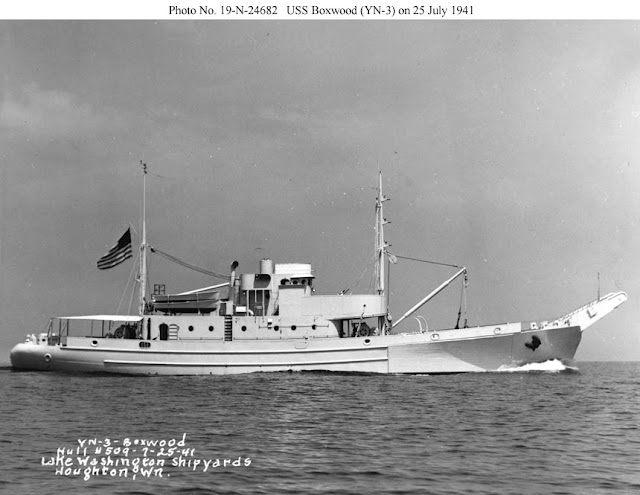 |
| Yard Net Tender Boxwood (YN-3) underway near Houghton, Washington, 25 July 1941, the day of her commissioning. Note the tiny diesel smokestack just aft of the bridge (US National Archives, RG-19-LCM, Photo No. 19-N-24682 a US Navy Bureau of Ships photo now in the collections of the US National Archive). |
Holocaust:
Reichsfuhrer-SS Heinrich Himmler issues orders that greatly expand the scope of persecutions, though that may not be their original intent. Himmler directs the creation of auxiliary police formations (
Schutzmannschaften) which are to be composed of "Ukrainians, the inhabitants of the Baltic States and Belorussians." These formations are destined to become the backbone of police manpower in the Baltic states. The original purpose of the Schutzmannschaften is debatable, with some later concluding that they are intended solely to provide security personnel for the process of feeding the Wehrmacht off local crops. Indeed, the order is issued in response to an OKW request for more security personnel. There is no question, however, that the Schutmannschaften units eventually participate in genocide against Jews.
Einsatzcommando 3 executes 103 Jews in Marjampole (Jäger Report).
 |
| Kirov Avenue, Baku, with the Drama Theatre on the right. This fine Russian city is the headquarters of the Soviet military defense of the oil center (Evening Post, 25 July 1941). |
French Homefront: The Germans announce over the radio that the Vichy government will deport all expatriate British citizens from France. There is a large group of British, pensioners and the like, especially in the south along the Cote d'Azur. Admiral Darlan is a well-known anglophobe, particularly since the British attacks on Dakar and Levant, which Paris radio characterizes as "the numberless British aggression." Paris radio further announces that the Vichy government will "regulate the position of Britons in France" because, "After getting rid of the Free French parasites and the enemies of France as well as of the communists and the Jews, it is now the turn of the British."
British Homefront: British documentary "Target for Tonight," a low-key account of the crew of a Wellington bomber going on a mission over Germany. Directed by Harry Watt, "Target for Tonight" is shot by the Royal Air Force Film Unit at RAF Mildenhall. All names and facts about RAF operations that could be of use to the Germans are altered. The film wins the Academy Award for "Best Documentary" in 1942.
American Homefront: Red Sox pitcher Robert Moses "Lefty" Grove wins his 300th victory during a 10-5 victory against the Cleveland Indians. Previously a star with Connie Mack's Philadelphia Athletics in the nineteen‐twenties and thirties, Grove compiled a phenomenal .682 winning percentage, registering an incredible 31 victories against only 4 losses in 1931. It took Grove numerous attempts to get this victory, and it is his last, as he is waived out of the league on 9 December 1941. Many consider Grove the greatest left-handed pitcher in American League history. Grove is voted into Baseball's Hall of Fame in 1947 for his 300-141 record and passes away in 1975.
Future History: Emmett Till is born near Chicago. His murder (lynching) in August 1955 in Money, Mississippi will become extremely controversial and a symbol of the Civil Rights movement. Two men, Roy Bryant and J. W. Milam are tried for the murder but found not guilty. They both later admit to murdering Till but cannot be prosecuted due to the Double Jeopardy Clause. In part due to publicity about the Till case, Congress passes the first Civil Rights Act since Reconstruction in 1957.
Manuel "Manny" Charlton is born in La Línea, Andalusia, Spain. He goes on to become a founding member of the Scottish hard rock band Nazareth and their lead guitarist from 1968 to 1990. He also produces some early versions of Guns N' Roses songs such as "Paradise City" and "November Rain" recorded on 4 June 1986.
Nathaniel Thurmond is born in Akron, Ohio. He goes on to become a professional basketball player for the Golden State Warriors for 14 years. Thurmond has his No. 42 jersey retired by the Warriors after his retirement in 1977 and enters the Naismith Memorial Basketball Hall of Fame. Nate Thurmond passes away on 16 July 2016.
 |
| Lefty Grove on 25 July 1941 after winning his 300th - and last - game. |
July 1941July 1, 1941: US TV Broadcasting StartsJuly 2, 1941: MAUD ReportJuly 3, 1941: Stalin SpeaksJuly 4, 1941: Pogroms in Eastern EuropeJuly 5, 1941: Germans on ScheduleJuly 6, 1941: Australians Attack DamourJuly 7, 1941: US Marines in IcelandJuly 8, 1941: Flying Fortresses In ActionJuly 9, 1941: British Take DamourJuly 10, 1941: Sword and Scabbard OrderJuly 11, 1941: Cease-fire in Syria and LebanonJuly 12, 1941: Anglo/Russian Assistance PactJuly 13, 1941: Uprising in MontenegroJuly 14, 1941: Katyusha Rocket Launchers in ActionJuly 15, 1941: Smolensk FallsJuly 16, 1941: Stalin's Son CapturedJuly 17, 1941: Heydrich Orders Mass ExecutionsJuly 18, 1941: Twin Pimples RaidJuly 19, 1941: V for VictoryJuly 20, 1941: The Man Who Wouldn't ShootJuly 21, 1941: Moscow in FlamesJuly 22, 1941: Soviet Generals ExecutedJuly 23, 1941: Secret Plan JB 355July 24, 1941: Operation SunriseJuly 25, 1941: US Naval AlertJuly 26, 1941: Italian E-Boat Attack on MaltaJuly 27, 1941: MacArthur ReturnsJuly 28, 1941: Auschwitz ExterminationsJuly 29, 1941: Rescue From CreteJuly 30, 1941: Raid on Petsamo and KirkenesJuly 31, 1941: Final Solution Order2020
